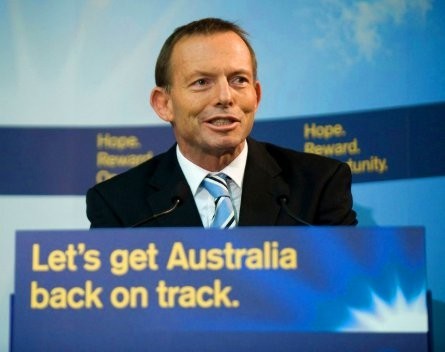
While pain was expected, yesterday’s budget is a significant setback for Australia’s startup community, according to a number of industry leaders.
The budget offered no clarity on how businesses will be encouraged to transition into a more innovative and internationally competitive economy in the future, says the Australian Private Equity & Venture Capital Association Limited (AVCAL).
“Everyone was expecting to see plenty of short-term pain for businesses in this budget – and that’s exactly what we got,” said AVCAL chief executive Yasser El-Ansary.
“But what we were also expecting to see tonight was a plan which set out the longer-term vision for what the Australian economy will look like in the next five or ten years – the short-term strategy of deep cuts to expenditure only makes sense when you can line it up against a picture of where we are trying to get to.”
El-Ansary says the abolition of the Innovation Investment Fund represents a major set-back to Australia’s capacity to foster a stronger venture capital industry.
“The new Entrepreneurs’ Infrastructure Program will have to be framed around backing Australian businesses with world-class ideas that can be supported by private sector investment from the venture capital industry,” says El-Ansary.
Tank Stream Ventures investment manager Rui Rodrigues says the abolishment of the Innovation Investment Fund and Commercialisation Australia, and the creation of the significantly reduced Entrepreneurs’ Infrastructure Program, was not in line with the budget’s objective of supporting job creation.
“Details on the newly created Entrepreneurs’ Infrastructure Programme remain vague,” Rodrigues says.
He says Commercialisation Australia was a huge loss to the community, having supported many successful technologies in the past.
On the IIF, Dr Michelle Deaker from One Ventures says they believed it should continue, but as a “lower government touch model with an audit report annually for Treasury”.
“It is important to note that IIF is a self-generating program, not a grant.” Deaker says.
BDO, which has released a number of reports on the budget, says whilst the government has wielded its axe to a number of grant, industry and incentive programs, it is somewhat comforting to note that more beneficial government programs such as the Export Market Development Grant (EMDG) program will remain, despite the recommendations made by the National Commission of Audit.
“We are disappointed to see the demise of Enterprise Connect which we have seen add significant value to the SME sector. We will, therefore, be interested to see the detail of the Entrepreneurs’ Infrastructure Program,” the report says.
El-Ansary says while a cut to the corporate income tax rate “is a step in the right direction, there is a lot more that needs to be done”, adding that according to the World Economic Forum’s Global Competitiveness Index, Australia currently ranks number 15.
Con Paoliello, director of tax services with RSM Bird Cameron, says the reduction in refundable and non-refundable R&D tax incentives means that companies undertaking R&D will now need to find additional funding for projects to substitute the incentive they were previously receiving.
BDO notes that the change from a tax concession (i.e. additional deduction) to a tax credit (i.e. offset) was intended to decouple the incentive from the corporate tax rate, meaning that the expected reduction in the corporate tax rate would not reduce the incentives provided.
“In a practical sense, the change in rates results in a more complex calculation of the benefit of the R&D tax incentive,” a BDO report says.
Paoliello says the announcement around the Medical Research Fund which will be allocated $20 billion is at the exclusion of other sectors.
“This is a missed opportunity for the budget to provide other initiatives to mobilise the economy on an innovation trajectory,” Paoliello says.
Deaker agrees the Medical Research Fund is an expense to other areas of the innovation economy.
“The government should consider how this medical research will be commercialised effectively to deliver real value for the country,” she says.
“Australia currently does not have the critical mass of resource to deliver on commercialising medical research, so the budget does not appear to be addressing the key bottlenecks in innovation commercialisation.”
Rodrigues says it’s perverse to significantly support infrastructure but only consider traditional infrastructure (roads and transport) and not digital infrastructure.
“For instance, a well-executed national rollout of the NBN would be worth a couple of per cent to the economy at probably a much smaller cost than old infrastructure investments,” he says.
“The budget is going to hurt innovation in general and startups in particular.”
El-Ansary says AVCAL will turn its attention over coming weeks towards pressing the government to map out a plan for how it will encourage greater investment into business and innovation in Australia, through the National Industry Investment and Competiveness Agenda, which is due to be released in the coming months.


COMMENTS
SmartCompany is committed to hosting lively discussions. Help us keep the conversation useful, interesting and welcoming. We aim to publish comments quickly in the interest of promoting robust conversation, but we’re a small team and we deploy filters to protect against legal risk. Occasionally your comment may be held up while it is being reviewed, but we’re working as fast as we can to keep the conversation rolling.
The SmartCompany comment section is members-only content. Please subscribe to leave a comment.
The SmartCompany comment section is members-only content. Please login to leave a comment.